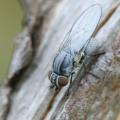Diptera.info :: Identification queries :: Diptera (adults)
Who is here? 1 guest(s)
|
Parasitic flies attracted by frog calls
|
|
| vmcaldart |
Posted on 27-02-2014 15:55
|
|
Member Location: Brazil Posts: 18 Joined: 26.02.14 |
Dear all, I'm currently studying communication in frogs in southern Brazil, a topic which have lead me to test the influence of illegitimate receivers on the acoustic signals of diurnal stream frogs. I recorded an interesting interaction of calling frogs and parasitic flies, briefly described in a recent paper (http://booksandjo...ll-live-02), and as a result of this I'm now using modified suction traps with frog calls as baits, in order to collect such insects. As a herpetologist, I have some questions regarding identification of diptera and hope you could kindly help me: 1) Which taxa of diptera (family and genera) have you collect with acoustic traps, or does the specific literature cite as frog parasites, attracted by phonotaxis? I have already identified Corethrella spp. in my material, and possibly Uranotaenia; 2) Regarding the mosquitoes in the attached figure, do you agree or disagree with my id as Uranotaenia? Images are out of scale and this material was prepared only for teaching purposes. 3) Regarding the second supplementary video of my paper, could such parasite flies be Uranotania, or which other diurnal taxa? (http://booksandjo...o/x-ms-wmv) Though I may be asking too much here, I think this topic could be a nice place to discuss this issue. Thanks in advance vmcaldart attached the following image: 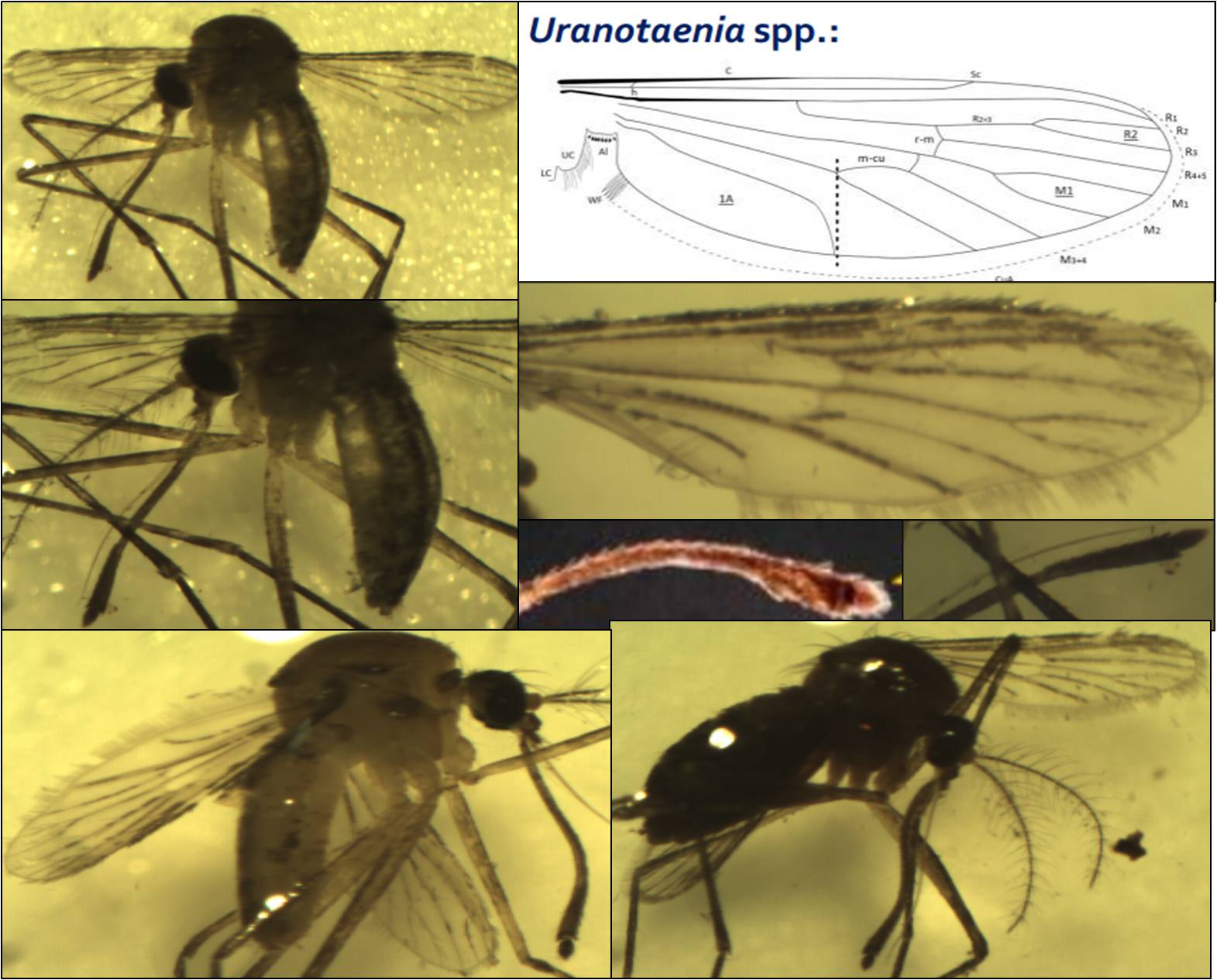 [171.36Kb] Edited by vmcaldart on 27-02-2014 17:42 |
|
|
|
| vmcaldart |
Posted on 27-02-2014 23:20
|
|
Member Location: Brazil Posts: 18 Joined: 26.02.14 |
At the moment I'm aware that Corethrella, Uranotaenia and Sycorax flies are attracted to frog calls. Any other taxon with neotropical distribution will be of my interest too. |
|
|
|
| vmcaldart |
Posted on 04-03-2014 00:11
|
|
Member Location: Brazil Posts: 18 Joined: 26.02.14 |
anyone familiar with these flies? |
|
|
|
| Gunnar M Kvifte |
Posted on 04-03-2014 21:44
|
|
Member Location: Kassel, Germany Posts: 436 Joined: 18.08.09 |
Corethrella can be collected with frog call traps, I think the other frog-biting Diptera use olfactory signals. I would be very interested to hear otherwise. |
|
|
|
| Sergiy Filatov |
Posted on 04-03-2014 22:32
|
|
Member Location: Kharkiv, Ukraine Posts: 259 Joined: 22.10.10 |
Hello vmcaldart! 1. I think your specimens are good fit for Uranotaenia sp. but nothing could be said more from these images. Although you may try to identify them to the species level with some keys which could be found on the internet (e.g. http://www.mosquitocatalog.org/files/pdfs/074300-11.pdf) the best thing is to ask your local expert. 2. Regarding other bloodsucking flies that feed on frogs, biting midges (Ceratopogonidae) of the genus Forcipomyia (Lasiohelea), mosquitoes of the subgenus Neoculex and occasionally of the other genera are mentioned in the literature as frog-biters. Here's the reference on Forcipomyia: SPINELLI, G.R., SCHAEFER, E.F. & A.I. KEHR (2002): First record of biting midges (Diptera: Ceratopogonidae) attacking frogs in the Neotropical Region. - Proc. Entomol. Soc. Washington 3. Thank's for such an inspirational topic! Since the representatives of all the above-mentioned taxa (with the exception of Corethrellidae) are known from Europe but rather comprise a scientific curiosity for medical entomologists, I didn't find any studies dedicated to research the phonotaxis in local fauna. So, it would be interesting for me to do something on this issue... Could you please share some technical aspects of your traps? To contact me, send an email to: filatovmidge@gmail.com Edited by Sergiy Filatov on 04-03-2014 22:43 |
|
|
|
| Sergiy Filatov |
Posted on 04-03-2014 22:41
|
|
Member Location: Kharkiv, Ukraine Posts: 259 Joined: 22.10.10 |
Hello Gunnar, I was surprised too, but some Culicidae are use phonotaxis as well. For example, Neotropical Uranotaenia lowii or Holarctic Culex territans. See links below: http://journals.c...id=8482212 http://www.ingent...1/art00011 |
|
|
|
| vmcaldart |
Posted on 05-03-2014 13:13
|
|
Member Location: Brazil Posts: 18 Joined: 26.02.14 |
Hello Gunnar and Sergiy, Thanks a lot for your helpful replies. I used bg sentinel traps http://www.bg-sen... modified with loudspeakers playbacking frog calls, as used by Grafe et al. (2008) http://onlinelibr...x/abstract. An alternative is to use CDC traps http://johnwhock....ight-trap/, removing the light and replacing it by a loudspeaker, as used in the studies of Art Borkent. Studies with phonotaxis experiments in Europe would be of great interest, indeed! Lets keep in touch. Best regards Edited by vmcaldart on 05-03-2014 13:14 |
|
|
|
| vmcaldart |
Posted on 13-03-2014 22:20
|
|
Member Location: Brazil Posts: 18 Joined: 26.02.14 |
ID request could these flies below be Forcipomyia? vmcaldart attached the following image: 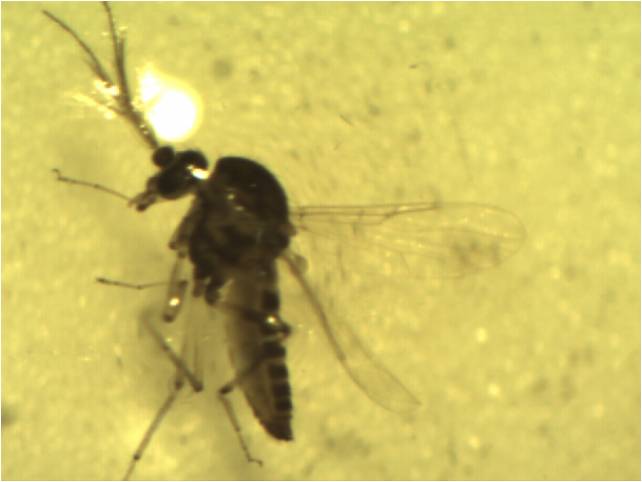 [23.22Kb] Edited by vmcaldart on 13-03-2014 22:24 |
|
|
|
| vmcaldart |
Posted on 13-03-2014 22:27
|
|
Member Location: Brazil Posts: 18 Joined: 26.02.14 |
detail of the wing, same flie as above
vmcaldart attached the following image: 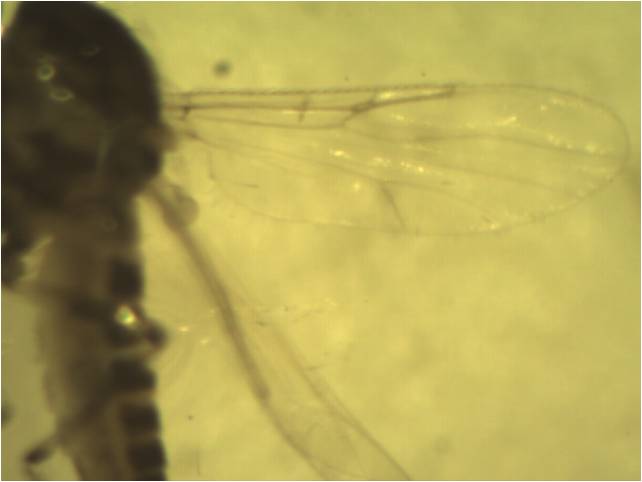 [18.17Kb] |
|
|
|
| vmcaldart |
Posted on 13-03-2014 22:28
|
|
Member Location: Brazil Posts: 18 Joined: 26.02.14 |
a different flie
vmcaldart attached the following image: 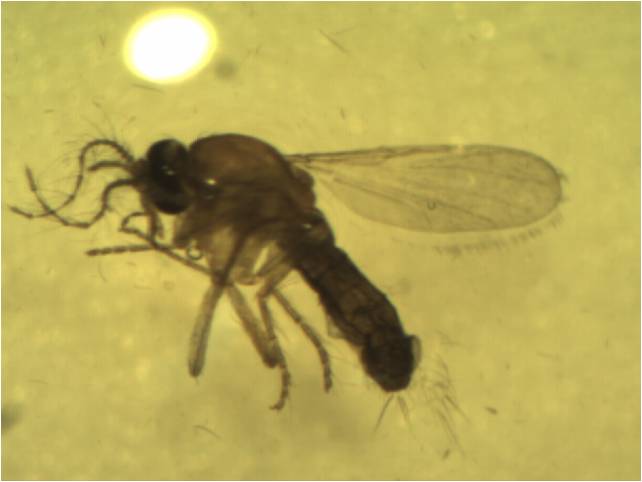 [22Kb] |
|
|
|
| John Carr |
Posted on 13-03-2014 22:34
|
|
Super Administrator Location: Massachusetts, USA Posts: 10327 Joined: 22.10.10 |
It looks more like Stilobezzia to me. The wing is similar to Forcipomyia (Lasiohelea), with M petiolate, first R cell short, and second R cell long. In general, Forcipomyia are hairy flies with hairy wings. The short fourth tarsomeres with longer, angled fifth tarsomeres are typical of predatory genera. Edit: The third image could be Forcipomyia (Lasiohelea). Edited by John Carr on 13-03-2014 22:35 |
| vmcaldart |
Posted on 13-03-2014 22:44
|
|
Member Location: Brazil Posts: 18 Joined: 26.02.14 |
I didn't knew this genus Stilobezzia... very similiar wing, indeed. Is it a Ceratopogonid too? Maybe this another flie below in my sample is a Forcipomyia (?). Seems more hairy than the other ones. vmcaldart attached the following image: 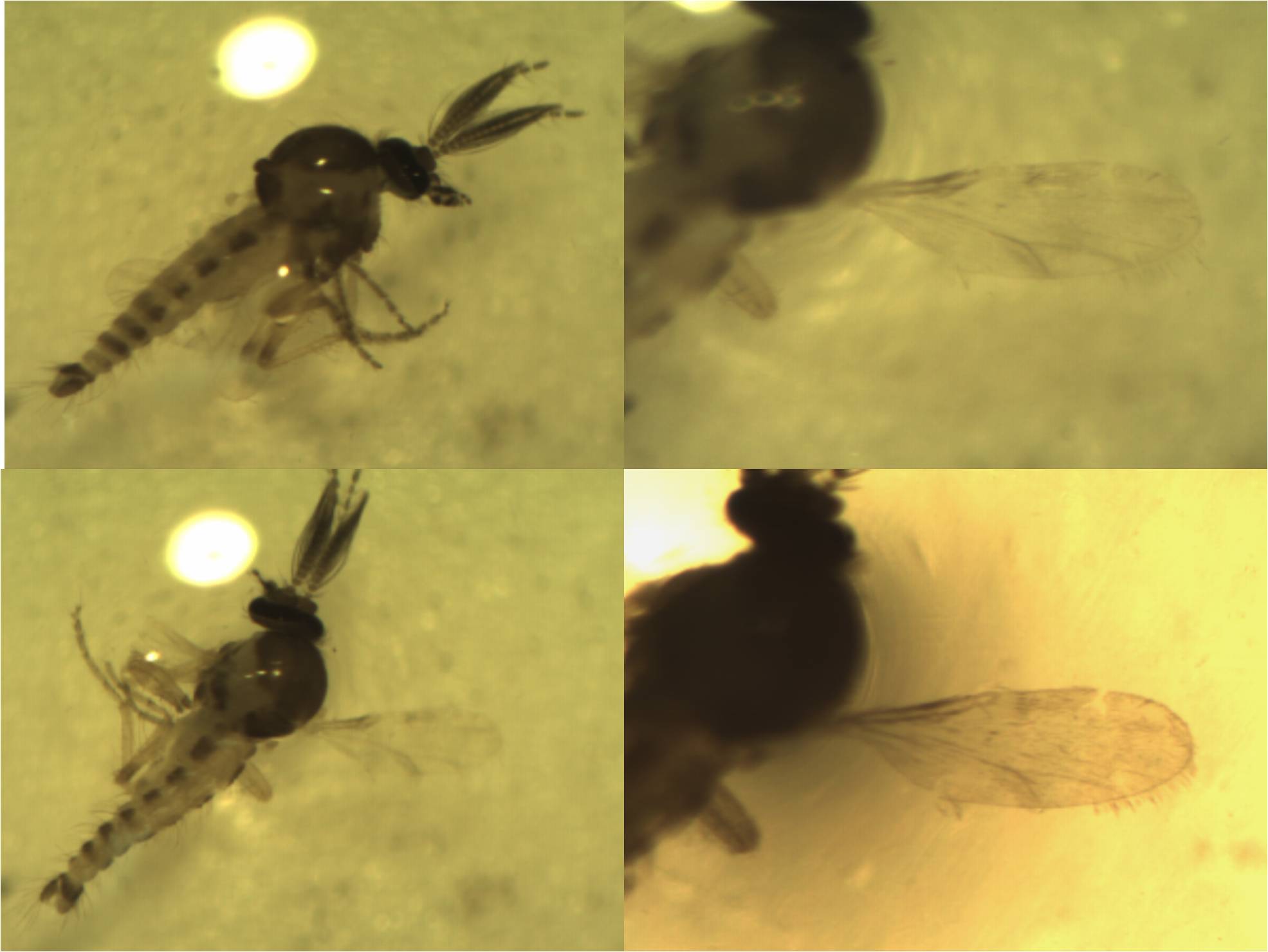 [127.03Kb] |
|
|
|
| John Carr |
Posted on 13-03-2014 23:33
|
|
Super Administrator Location: Massachusetts, USA Posts: 10327 Joined: 22.10.10 |
There are six common genera of Ceratopogonidae in tropical America, and many less common. Bezzia and Stilobezzia are predatory. Culicoides are usually parasitic on vertebrates. Forcipomyia and Atrichopogon are frequently parasitic on invertebrates. Forcipomyia (Lasiohelea) is parasitic on vertebrates; the only North American species feeds on frogs. Dasyhelea are neither predatory nor parasitic. The last picture is probably Forcipomyia, but probably not Lasiohelea. Edited by John Carr on 13-03-2014 23:34 |
| vmcaldart |
Posted on 22-08-2014 17:33
|
|
Member Location: Brazil Posts: 18 Joined: 26.02.14 |
For frog-biting diptera taxa (i.e. Corethrella, Uranotaenia,Culex, Forcipomyia, Sycorax) is it correct to say that only female bites? Or this is true just for some genera? Sorry for my ignorance in this topic. |
|
|
|
| John Carr |
Posted on 22-08-2014 19:01
|
|
Super Administrator Location: Massachusetts, USA Posts: 10327 Joined: 22.10.10 |
In Nematocera and Orthorrhapha, only females bite. In Cyclorrhapha, sometimes both sexes bite. All the taxa you mentioned are Nematocera. |
| Jump to Forum: |









